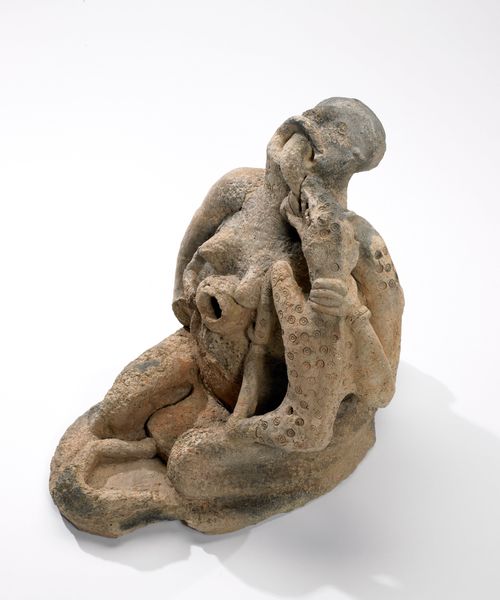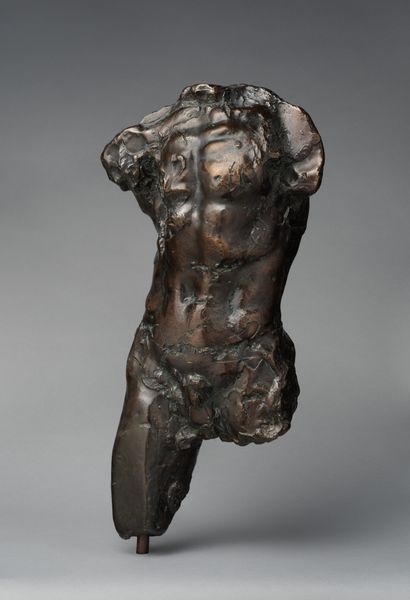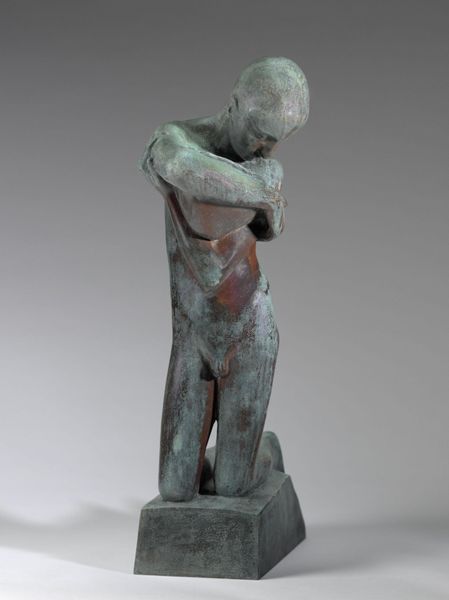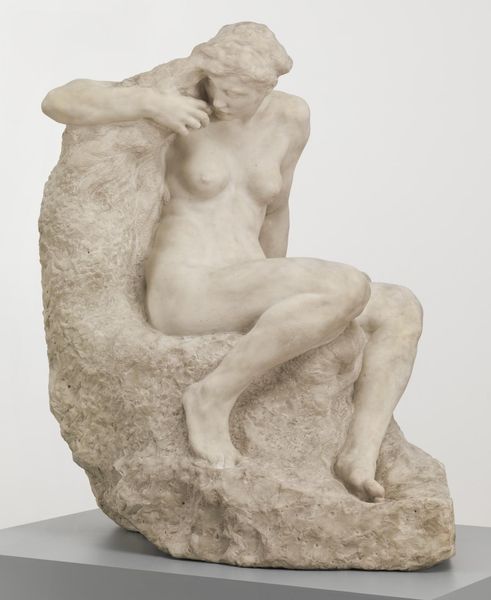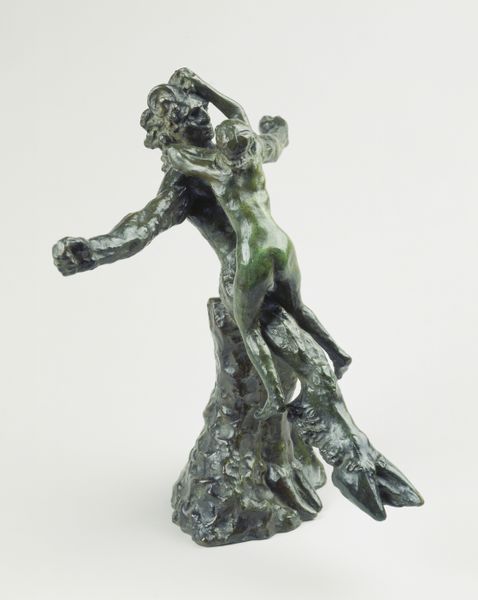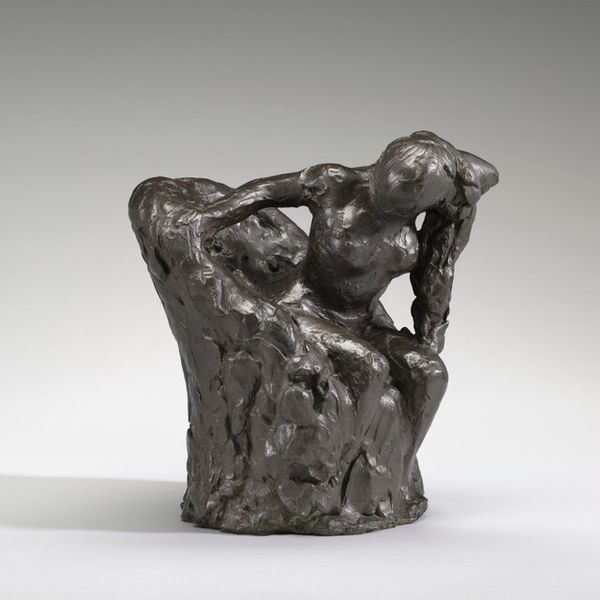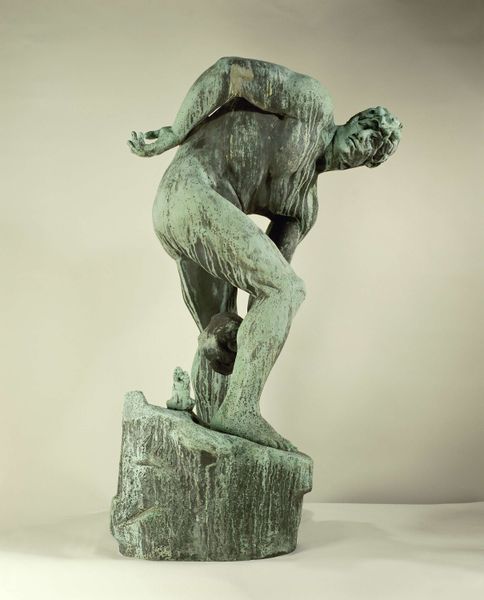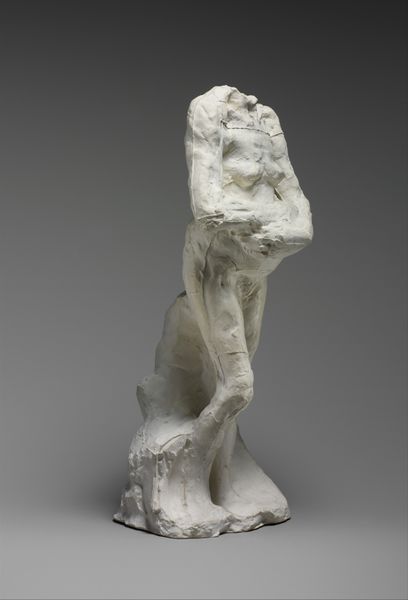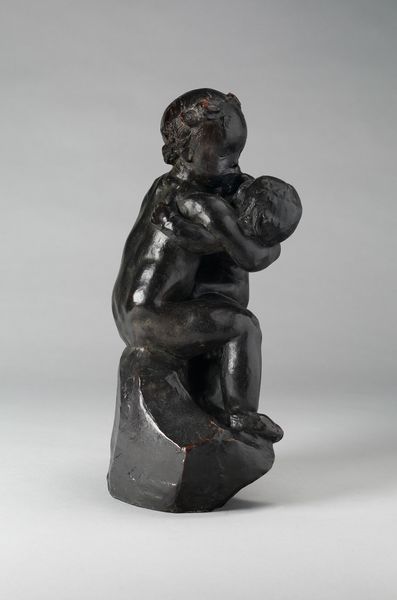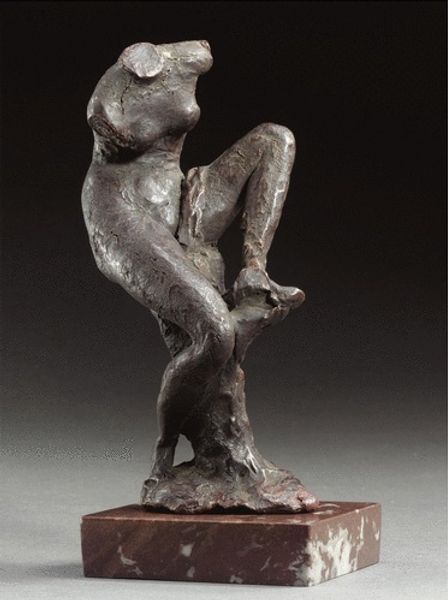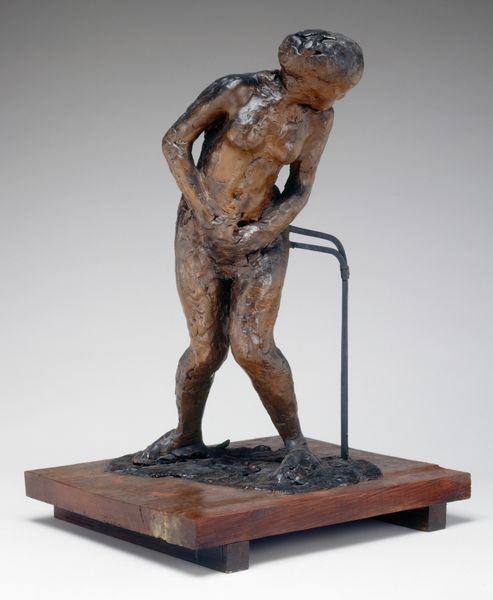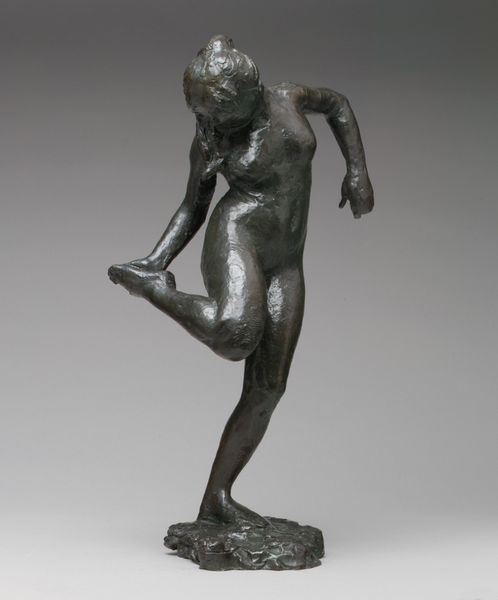
bronze, sculpture
#
sculpture
#
bronze
#
mannerism
#
figuration
#
sculpting
#
sculpture
#
decorative-art
#
statue
Dimensions: Overall (confirmed): 25 1/8 × 13 × 20 5/8 in., 192 lb. (63.8 × 33 × 52.4 cm, 87.0906 kg)
Copyright: Public Domain
Editor: Right next we have Camillo Mariani's 'Mother Ape' from around 1595. The cool sheen of the bronze and intricate detailing make it strangely compelling. What draws your attention as you look at this sculpture? Curator: Immediately, the Mannerist qualities stand out. Notice the exaggerated musculature, the almost unsettling hyper-realism of the fur texture rendered in bronze. Mariani prioritizes the formal qualities, pushing the limits of the material. Do you observe the directional lines that contribute to the work’s meaning? Editor: I guess so, but could you expand? The monkey and its child kind of wind and coil around each other in this strange pose, which is pretty striking… Curator: Precisely. The twisting pose, known as figura serpentinata, is a hallmark of Mannerist sculpture. The forms spiral upward, defying classical balance. This conscious departure from Renaissance ideals is, in itself, the work’s primary statement. Editor: So you’re saying the sculpture isn’t necessarily about apes at all, more so it's an exploration of form and a reaction against art traditions? Curator: Precisely. Look at the varying depths of the bronze finish. The surface almost vibrates! Can we even discuss symbolic intent with such clear formal aims? Is meaning even relevant when assessing this period? I wonder about its place in an artistic history defined by humanism and religious patronage. Editor: It’s pretty impressive what Mariani achieves using just bronze. The texture of the hair! Curator: Yes. And look how the smooth planes on the ape’s face contrast the rougher fur textures! Mariani manipulates the surfaces to play with our perceptions. I found new appreciation for this sculpture thinking about the Mannerist embrace of complexity, and rejection of ideal forms. Editor: Me too! Focusing on the form opens up how to see the art and what the artists' motivation might be!
Comments
No comments
Be the first to comment and join the conversation on the ultimate creative platform.
